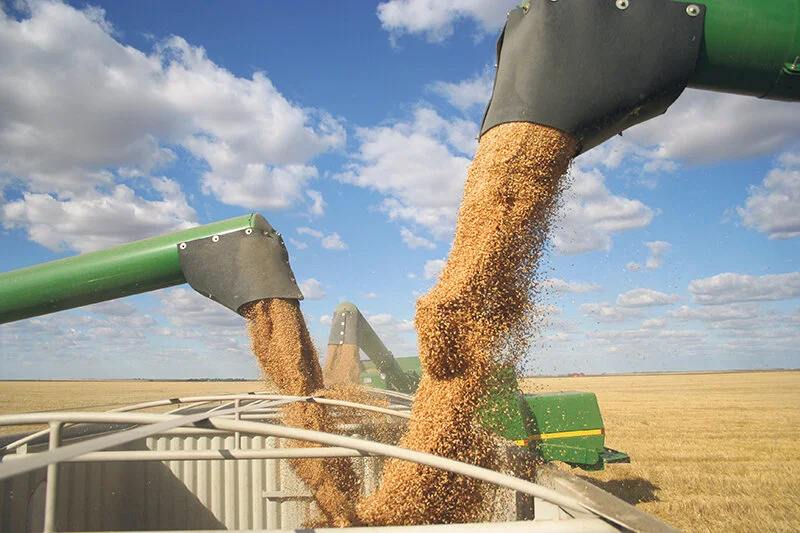Farmers help tackle climate challenges, but fear unintended consequences of carbon pricing
Canadian farmers worry that carbon pricing targets activities they simply cannot avoid. istock.com
Climate change is a curse for Canada’s farmers. Colder winters, wetter springs and drier summers have wreaked havoc in recent years from the potato fields of Prince Edward Island to the fruit farms in British Columbia’s Okanagan valley.
But bizarre as it may seem given the damage climate change is causing throughout the world, there may be a bright side. Higher temperatures could mean longer growing seasons and open up vast northern lands that are currently too cold to cultivate.
According to a 2019 federal government report, Canada has warmed and will continue to warm at more than double the global rate, with higher temperature increases observed in the North, the Prairies, and northern British Columbia.
Canadian Federation of Agriculture (CFA) president Mary Robinson says it’s a glass half full, glass half empty situation for farmers in some regions.
“Warming will certainly provide opportunities for agriculture in certain regions. A longer growing season and shorter, milder winters will allow some farmers to grow crops they may never have grown before,” she says. “But the flip side of warmer summers could be problems for livestock producers because of heat waves and animal deaths, particularly on poultry farms.”
“
Our number one concern is how carbon pricing currently targets activities that we simply can’t avoid, such as grain drying and heating or cooling a livestock barn. Our alternatives to reduce carbon consumption are very limited. ”
Higher temperatures and less water for irrigation could also lead to lower yields for potato and other root vegetable producers, reduced milk production and reduced weight gain potential in cattle, she adds.
As a managing partner of a sixth-generation family farm on PEI, Ms. Robinson speaks from personal experience. Two consecutive, severe summer droughts in Prince Edward Island reduced yields, greatly reducing the volume of potatoes to send to market as well as available feed needed for livestock.
It’s trends like these that are driving the CFA’s efforts to draw attention to not only the challenges facing farmers but also the key role the agricultural sector can play in helping Canada reach its climate change mitigation targets.
Ms. Robinson says it is important for the government to recognize the unique position of the agricultural sector when it comes to programs such as carbon pricing.
“Our number one concern is how carbon pricing currently targets activities that we simply can’t avoid, such as grain drying and heating or cooling a livestock barn. Our alternatives to reduce carbon consumption are very limited,” she says.
For farmers, it’s a catch-22: reducing carbon use is critical to addressing climate change, but using carbon is equally critical to their profitability. To make the situation even more challenging, many farmers are price takers in the market rather than price setters and therefore have little control over what they are paid for their products regardless of increases in input costs, leaving little or no opportunity to pass along these increases.
But the CFA has not given up and will work with federal farming groups on policy solutions to mitigate these impacts, says Ms. Robinson.
Part of this initiative is the recent formation of the Agriculture Carbon Alliance (ACA), a national coalition of 10 industry-wide farm organizations including the CFA.
CFA vice president Keith Currie says the ACA was established to ensure Canadian farmers’ sustainable practices are recognized through a policy environment that maintains their competitiveness, supports their livelihoods and leverages their critical role as stewards of the land.
ACA will advocate for constructive and evidence-based policies on carbon pricing, offsets, retrofit funding and related environmental policies. ACA will also work with the federal government on solutions-oriented strategies to ensure the agricultural sector remains competitive, both in Canada and globally.
“Farmers have done a great job over the past 30 years to reduce carbon use through practices such as no-till, which reduces vehicle trips across the field,” says Mr. Currie. “But we are now at a point where we don’t have the option of switching to electric or hydrogen vehicles like some other industries because electric vehicles simply don’t have the horsepower or recharging time we need to operate.”
He says farmers are not opposed to what the government is trying to do to reduce carbon use and supports the end goal, but wants to see policies that make sense to the agricultural industry.
“We want to have a discussion to get us on the same page so that we can all reach the goal in a way that’s practical, implementable and affordable for us as farmers,” adds Mr. Currie.
Through the promotion of its vision of “Unleashing Agriculture’s Potential,” CFA is advocating government consider Canadian agriculture’s economic and carbon sequestration potential and how striking the right balance will drive economic recovery and drive greater carbon sequestration within the sector.
“A win-win for all,” he says.
For more information, visit www.cfa-fca.ca
For more stories from this feature, visit globeandmail.com


